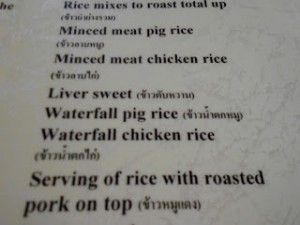I think spiders are soldiers of Satan, but even the threat of massive, wandering ones didn’t stop me from getting to Brazil this month to experience the World Cup. Though my time there was short, between matches, I managed to dip a toe into the vibrant Salvadoran culture outside the stadium.
After feasting on steaming hot moquecas and African-inspired acarajé, I realized just how much of that region’s cuisine is built on shared experiences. So, today, I’ll do my best to share some of that experience with you, PR pros. Here are four food marketing lessons straight from Salvador and the World Cup:
What you see enhances what you get.
Squeezed into a tented bar in the middle of a rainstorm, I got an unobstructed view of all that went into my favorite Caipirinha of the trip: 10+ freshly squeezed limes, several scoops of cane sugar, a healthy pour of Cachaca and 20 minutes worth of diligent muddling. Seeing the degree of care that went into crafting that slow, delicious cocktail gave me confidence in my purchase, heightened my respect for the man making it, and – psychological voodoo or no – really made it taste better. A good reminder of the value add that comes with “food as an experience.”
To Americans, food trucks seem to be the greatest thing since sliced bread, but to Brazilians? Entirely unnecessary. The street food I tasted in Salvador was delicious, and most of it came from collapsible carts and old beat-up coolers on wheels. All these vendors seemed to need was a 3×4 foot work spaces and the ingredients to make what they were hawking. We bought whole coconuts lopped open with machetes and skewers of white cheese char-grilled over hot coals. (And lord knows we weren’t the only ones.) So, before you invest in that shiny new set of wheels, think this through. There are all kinds of other ways to create a street food novelty.
Move over smoothies, bowls are on the rise.
I love a good smoothie, but, to me, anything consumed through a straw feels substantially less, well, substantial, than something eaten with a spoon. In Brazil, I found a foodstagram-friendly solution more satisfying than a smoothie and more accessible than other fast food: the acai bowl. Shops selling these refreshing snacks appeared on nearly every corner and bustled from morning to midnight. Typically made with acai, banana and granola, the bowl concept, I imagine, could be applied to any combination of fruits –strawberry and mango, peach and pineapple, avocado and raspberry … There are all kinds of possibilities.
Stumped by this one? So were we. The phrase appeared on a lunch menu claiming to be translated from Portugese to English. But what the proprietor of that place saved in translation fees he lost in sales … because nothing scares off potential customers like seeing something scary or unappetizing on their list of lunch options. So, restaurant owners, take note: Resist the urge to rely on Google to cut costs; instead, invest in a good menu translator.
There’s no denying that Brazil does food differently – and often in ways we Americans might not like. But its approach is rich in creativity and rife with ideas for new food marketing concepts.



